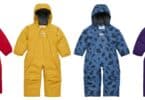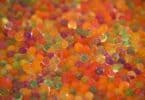The U.S. Food and Drug Administration (FDA) recently announced the revocation of authorization for FD&C Red No. 3 (also known as erythrosine in other countries) in food and ingested drugs. This decision, based on the Delaney Clause of the Federal Food, Drug, and Cosmetic Act (FD&C Act), marks another step in ensuring food safety for Americans. The ban comes after decades of scrutiny surrounding the synthetic dye, widely used in candies, baked goods, frostings, and certain medications.
The Reason Behind the Ban
The Delaney Clause, enacted in 1960 as part of the Color Additives Amendment to the FD&C Act, prohibits the FDA from authorizing any food or color additive found to cause cancer in humans or animals. This clause has been a cornerstone of food safety regulations, ensuring that even minimal risks are addressed.
The FDA’s decision to ban Red No. 3 follows a 2022 color additive petition that highlighted studies showing cancer development in male rats exposed to high levels of the dye. While these effects were linked to a rat-specific hormonal mechanism not applicable to humans, the FDA determined that the Delaney Clause mandated action. The agency emphasized that typical human exposure levels are much lower than those causing cancer in laboratory animals, and no evidence suggests Red No. 3 poses a significant risk to humans.
Banned in Cosmetics, But Not Food
Interestingly, the FDA banned Red No. 3 in cosmetics in 1976 after studies linked the dye to cancer in animals. However, its use in food and medications persisted due to industry lobbying and the argument that low exposure levels in humans were unlikely to cause harm. This inconsistency has been a point of contention among consumer advocacy groups for decades.
Comparing FD&C Red No. 3 and Red No. 40
Red No. 3 differs from its counterpart, Red No. 40, in both chemical structure and health impact. While Red No. 40 remains authorized for use, it has also faced scrutiny for potential behavioral effects, including hyperactivity in children and potential allergic reactions. Unlike Red No. 3, Red No. 40 has not been definitively linked to cancer, which explains why it has not been subjected to a similar ban under the Delaney Clause.
Agencies like the FDA and Health Canada permit the use of Red 40 within established safety limits to ensure consumer safety. The Acceptable Daily Intake (ADI) for Red 40, set by the Joint FAO/WHO Expert Committee on Food Additives (JECFA), is 7 mg/kg of body weight per day and is considered safe based on typical exposure levels. However, these limits may not fully account for the cumulative exposure individuals experience, as Red 40 is widely used in a variety of processed foods, beverages, and medications. This widespread presence can result in higher-than-anticipated daily intake, particularly in children who may consume multiple products containing the dye in a single day.
Other Synthetic Dyes Under Scrutiny
The debate over synthetic food dyes extends beyond Red No. 3. Several other dyes have raised health concerns, including:
- Yellow No. 5, and Yellow No. 6: These dyes are associated with behavioral issues, particularly in children, and are contaminated with benzidine or other carcinogens.
- Blue No. 1 and Blue No. 2: Studies have linked these dyes to potential cancer risks in laboratory animals.
In contrast to the U.S., many countries have implemented stricter regulations. For example, the European Union has banned certain dyes outright or required warning labels for products containing them.
International Context: Dyes Banned Abroad
- Blue No. 1 and Yellow No. 5: Subject to stricter regulations in Europe.
- Yellow No. 6: Banned in Norway and Finland.
- Ponceau 4R (E124): Banned in the U.S. but used in Europe with warning labels.
Manufacturers using FD&C Red No. 3 in food products have until January 15, 2027, to reformulate their offerings, while those using the dye in medications have until January 18, 2028. After these dates, products containing the dye will no longer be allowed on U.S. shelves. Imported foods must also comply with these regulations.
Until the ban is fully implemented, Red Dye No. 3 can still be found in a variety of products, including:
- Candies: Such as Pez Assorted Fruit, Brach’s Candy Corn, Jelly Belly jelly beans, and Brach’s Conversation Hearts.
- Baked Goods: Items like Entenmann’s Little Bites Party Cake Mini Muffins, toaster pastries, and cookies with red icing or decorations.
- Dairy and Frozen Foods: Including ice cream, frozen yogurt flavors, ice pops, fruit bars, and products like TruMoo Strawberry Milk.
- Beverages: Certain drinks, such as Ensure Original Strawberry Shake.
- Fruit Products: Some canned fruit cocktails, like Kroger Extra Cherry canned fruit cocktail.
- Medications and Supplements: Certain medications and gummy vitamins may also contain Red Dye No. 3.
To identify whether a product contains Red Dye No. 3, consumers should check the ingredient list for terms like “Red 3,” “FD&C Red No. 3,” or “erythrosine.”
Even though this is a small win, you will still a lot of bright products on the shelf. Items containing Red 40, also known as Allura Red AC, include:
- Snacks and candies: Chewing gum, gummy bears, licorice.
- Beverages: Sports drinks, sodas, and flavored waters.
- Baked goods: Frostings, cake mixes, and pastries.
- Dairy products: Flavored yogurts and ice creams.
- Packaged meals: Instant noodles, frozen foods, and ready-made meals.
Canada Far Behind In Legislation
Despite U.S. lawmakers pointing to Canadian Kellogg’s Froot Loops as a healthier option due to differences in dye usage, Canada’s laws regarding Red 3 and other synthetic food dyes are outdated. In Canada, Red 3 is permitted in both foods and cosmetics, with limited restrictions.
Red 3 is included in Canada’s List of Permitted Colouring Agents, which allows its use in various foods at specific concentration levels. The additive is listed in Health Canada’s Cosmetic Ingredient Hotlist, a resource that outlines substances permitted or prohibited in cosmetics. While it is allowed as a colorant, manufacturers must adhere to labeling requirements and concentration limits. However, unlike the FDA’s recent proactive stance, Health Canada has not announced plans to reassess the safety of Red 3 in light of emerging data.
Related Articles:







